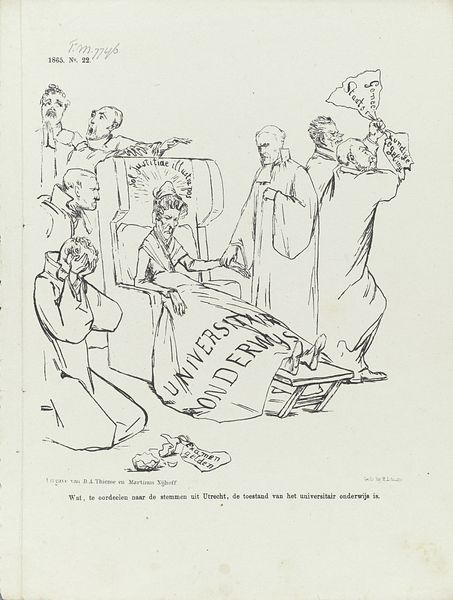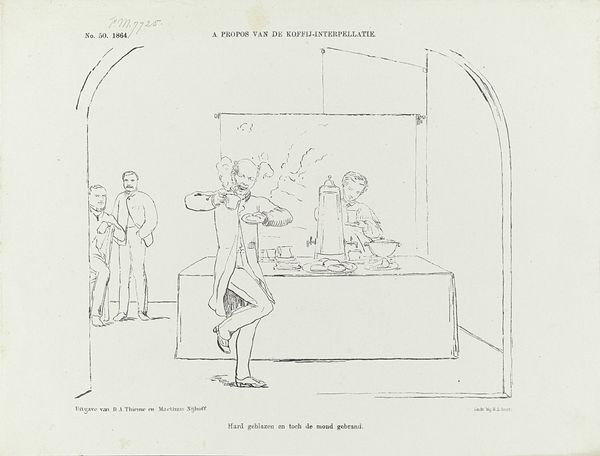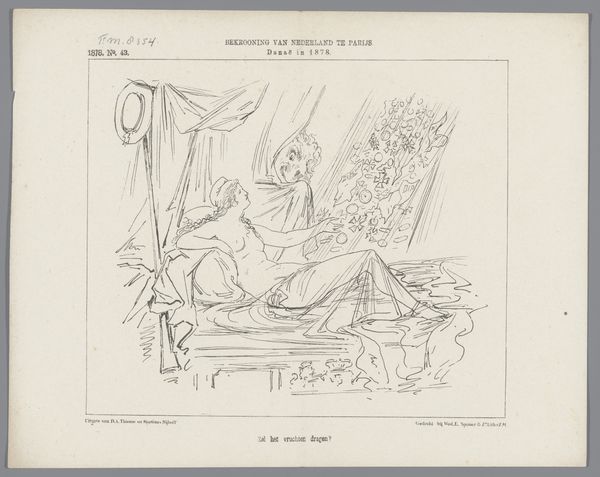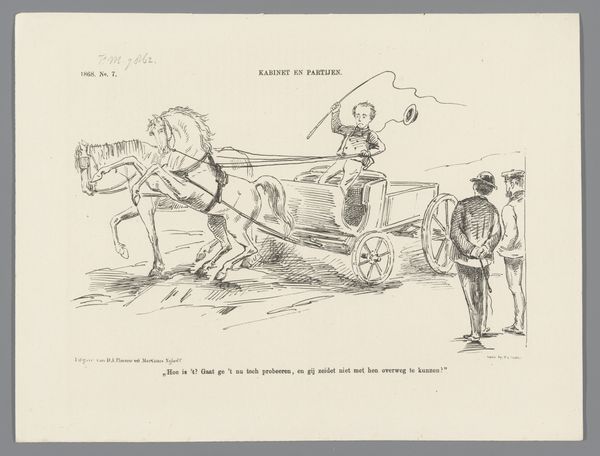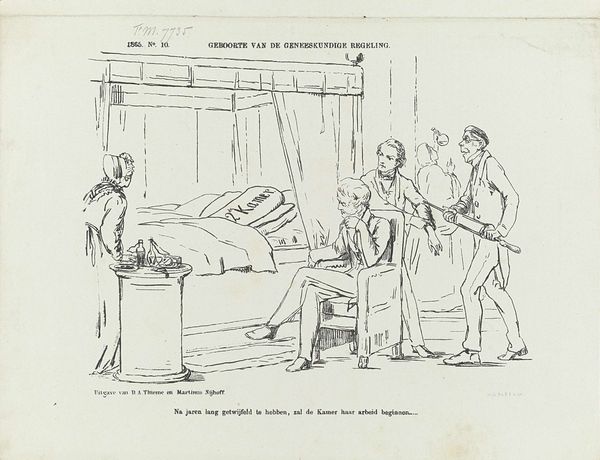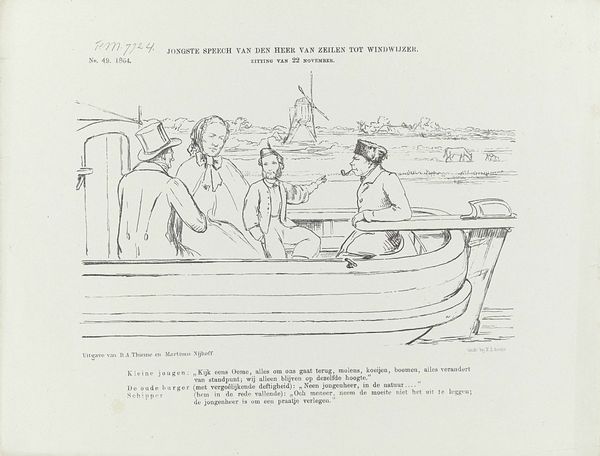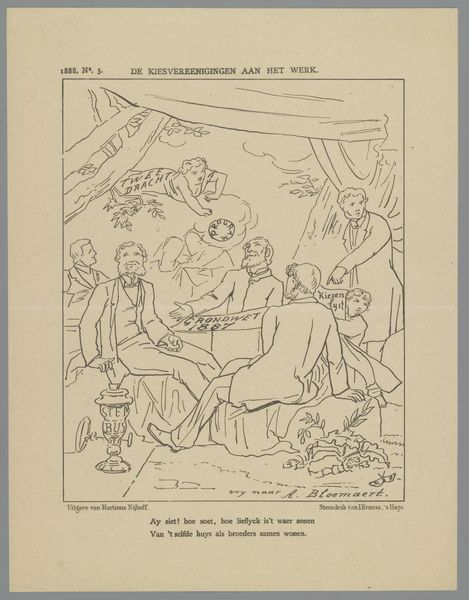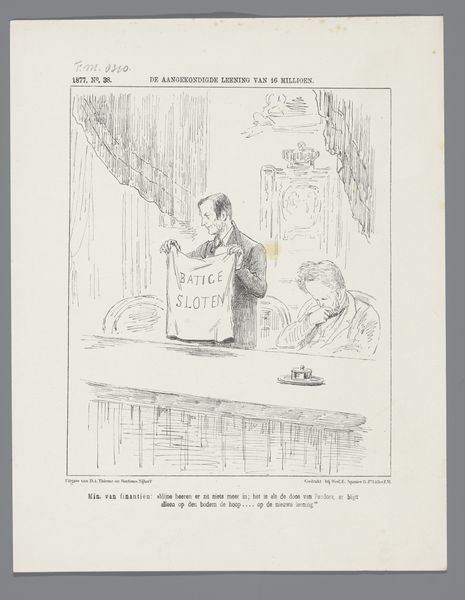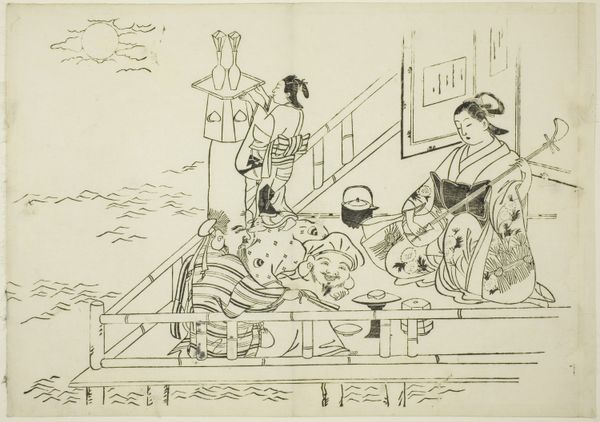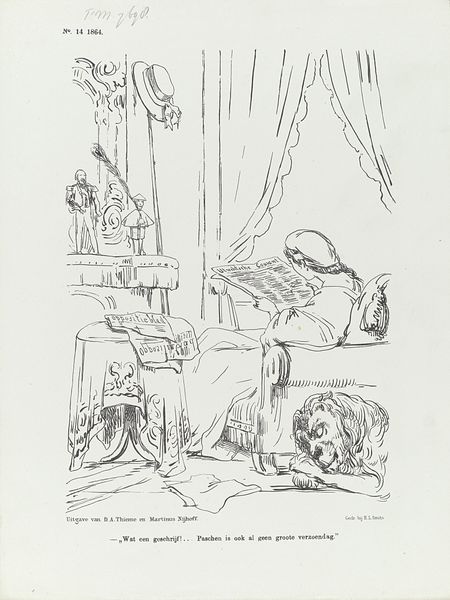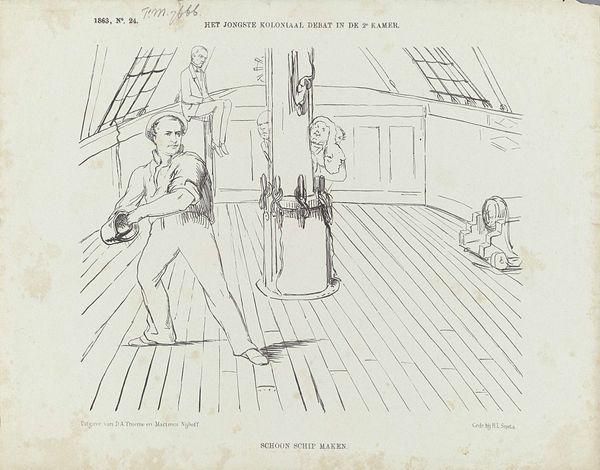
Spotprent op de nieuwe kamerleden baron van Zuylen van Nijevelt en Simons, 1864 1864
0:00
0:00
drawing, paper, ink
#
portrait
#
drawing
#
comic strip sketch
#
imaginative character sketch
#
quirky sketch
#
caricature
#
paper
#
personal sketchbook
#
ink
#
idea generation sketch
#
sketchwork
#
ink drawing experimentation
#
group-portraits
#
sketchbook drawing
#
genre-painting
#
storyboard and sketchbook work
#
modernism
#
initial sketch
Dimensions: height 215 mm, width 275 mm
Copyright: Rijks Museum: Open Domain
Editor: This is a political cartoon called "Spotprent op de nieuwe kamerleden baron van Zuylen van Nijevelt en Simons, 1864," created with ink on paper by Johan Michaël Schmidt Crans. I notice how the artist uses contrasting panels to tell a story… but I'm unsure what the narrative might be. What do you see in this piece? Curator: I see a critique of power dynamics in 19th-century Dutch politics, using caricature to highlight perceived inequalities and biases within the system. It appears that Baron van Zuylen and Simons are new members being examined for their political leanings. How might their actions impact society's marginalized voices? Editor: So the cartoon is directly addressing political inclusion and power? I hadn’t considered the societal impact of new leaders. Curator: Precisely. The drawing prompts questions about the selection of leaders. Are existing structures serving the interests of all citizens? Does the visual language employed in the cartoon reinforce or challenge prevailing stereotypes about politicians and their motives? Editor: The text below the panels is quite small; is that part of the commentary too? Curator: Absolutely. It provides context by including written statements made by the politicians, letting the audience draw their own conclusions. Considering that the image is a reproduction, how does that change the viewing experience? Editor: That’s fascinating; considering this work in its time encourages a whole different type of close-looking. I'm rethinking how political cartoons can spark dialogue on identity and power! Curator: Exactly. Art serves as a powerful tool for engaging with uncomfortable realities and envisioning more equitable futures. Analyzing this historical drawing gives a new meaning to contemporary discussions.
Comments
No comments
Be the first to comment and join the conversation on the ultimate creative platform.
